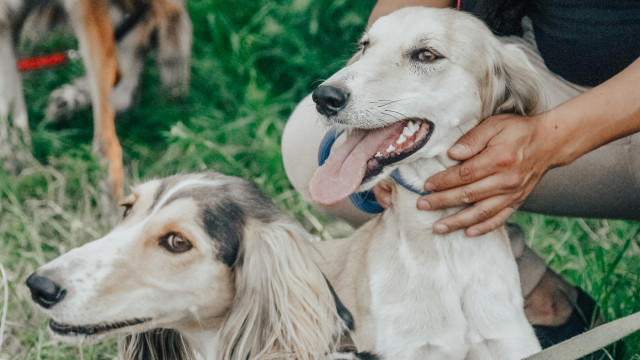
An international dog show took
place in Astana, where a special commission examined around 100 Kazakh Tazy
dogs for recognition as a distinct breed. Notably, prior to this, Tazy dogs of
various age categories and coat colors were examined in all regions of the
country. Elena Khardina, a breeder from eastern Kazakhstan, brought her three
Tazy dogs to the exhibition. In total, around 3,500 Tazy dogs with
documentation are registered in the country.
“I began my career as a
cynologist in 1991. I worked as an expert for DOSAAF and kept many breeds. My
first dogs were Dobermans, Boxers, and Pugs. However, in 2006, during my own
exhibition, everything changed when I first laid eyes on Tazys. These dogs, brought
from the Rulikha village in eastern Kazakhstan, captured my heart. Since then,
my devotion has been solely to the Tazy dog breed,” said Khardina.
The leadership of the Fédération
Cynologique Internationale (FCI), or the International Canine Federation,
carefully examined the dogs. The task of foreign specialists is to verify the
compliance of the presented dog breed with established standards. They must
ensure that there is a sufficient population of dogs in the country and that
genetic and breeding work is being carried out to preserve and continue the
breed.
“Tazys are sighthounds, so they
are hunters; they have to run fast, and of course, this supposes a confirmation
which is typical for that kind of performance. And these are the things experts
have to check, that has to do with angulation mostly, and of course, having
healthy eyes, and strong bones. That’s the main characteristic they are looking
for,” FCI Executive Director Yves De Clercq said.
“Following the exhibition, a commission will
draft a report, which will form the basis of the decision by the General
Committee of the International Canine Federation regarding the recognition of
the Kazakh Tazy as the national breed and brand of Kazakhstan. If the standard
specifies a particular height requirement for the dogs, they will verify
compliance with this criterion. Similarly, if the standard states that the coat
colors can be red, white, and black, they will confirm adherence to these
specifications,” Bauyrzhan Serikkali, President of the Kazak Union of
Cynologists, said.
Following the examination, the
commission will provide its recommendations to the General Committee of the
FCI. The decision will be reviewed, and conclusions will be made at the meeting
in Amsterdam in early September.









